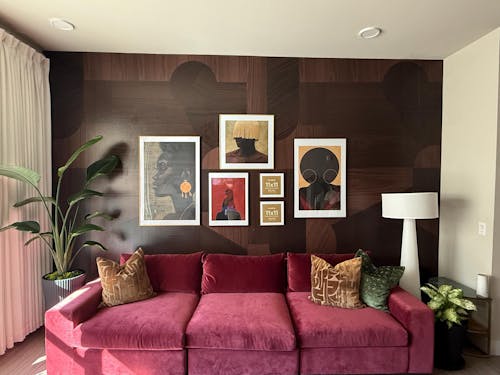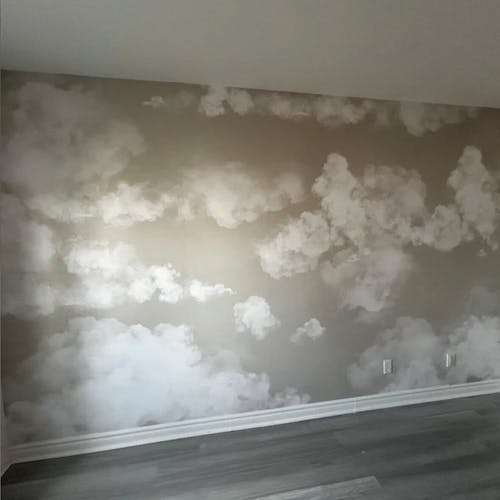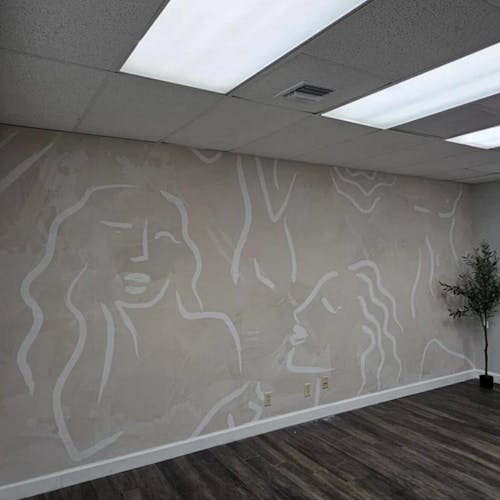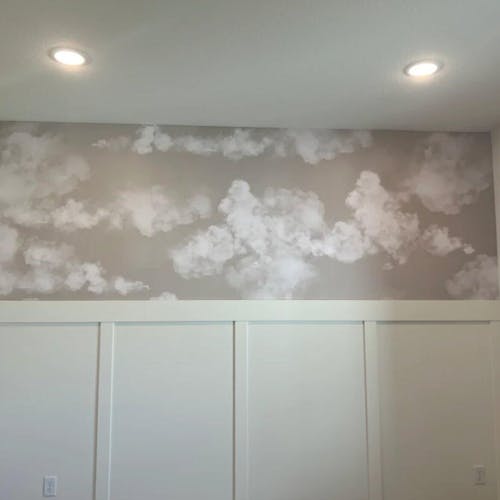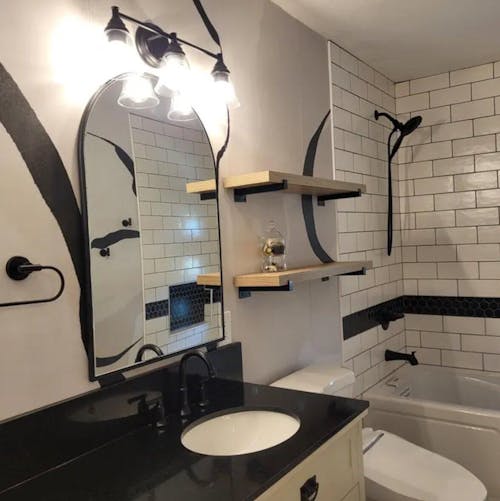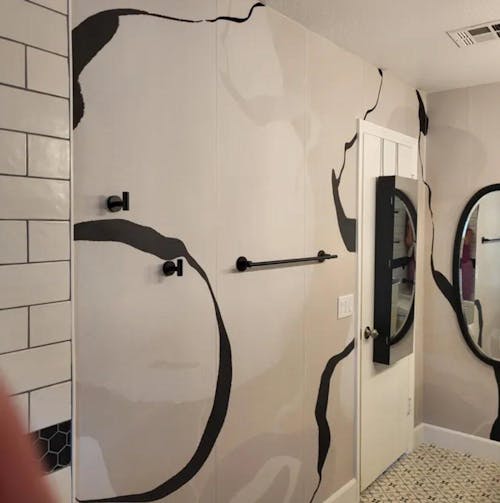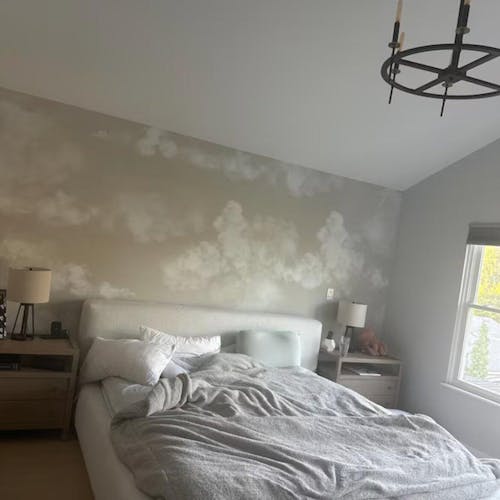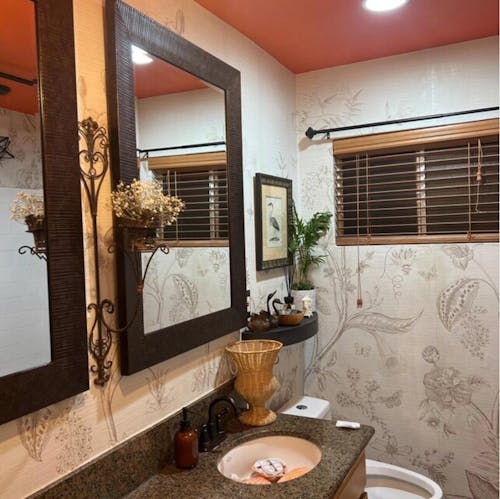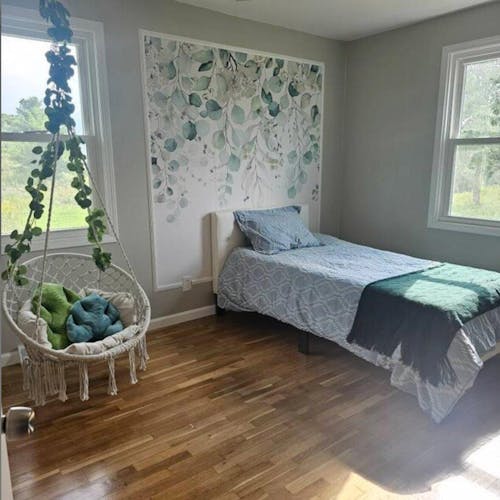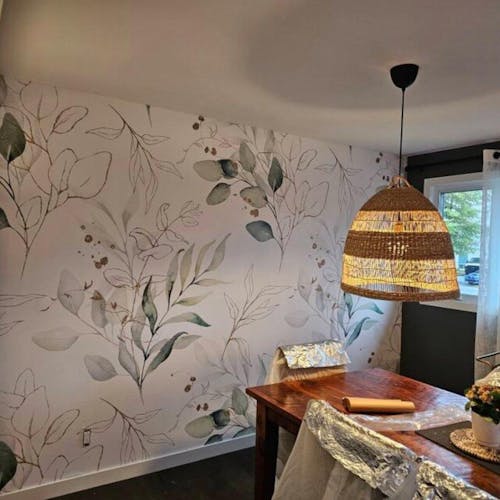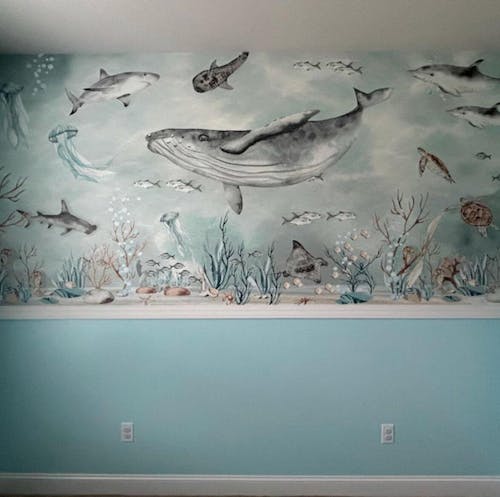Peel and stick wallpaper has gained immense popularity among home decor enthusiasts due to its convenience and versatility. However, many people have questions about how does peel and stick wallpaper work and what to expect from its installation. This article addresses the 10 most frequently asked questions about peel and stick wallpaper, offering valuable insights and guidance.
1. Is peel and stick wallpaper hard to work with?
Self-adhesive wallpaper is designed to be easy to use, making it a great option for DIY enthusiasts. The installation process involves peeling off the backing and sticking the wallpaper onto a clean and smooth surface. Unlike traditional wallpaper, there is no need for extra adhesive or water, which makes the process much simpler.
2. How does peel and stick wallpaper adhere to the walls?
Peel and stick wallpaper features a self-adhesive backing that allows it to stick to walls without additional glue. The adhesive is pre-applied and activated by pressure upon application. It is specially formulated to provide strong adhesion to various surfaces, including painted walls, smooth surfaces, and some lightly textured surfaces. Following the manufacturer's instructions is essential for optimal adhesion and longevity.
3. Does peel and stick wallpaper damage walls?
One of the biggest advantages of peel and stick wallpaper is that it is designed to be removable without damaging walls. When applied and removed correctly, it should not cause any harm.
To avoid wall damage during removal, start by peeling off a corner and slowly pulling it away from the wall at a 45-degree angle. Using a hairdryer on low heat can help loosen the adhesive for easier removal. If any residue remains, a mild adhesive remover or a mixture of warm water and dish soap can clean the surface safely.
4. Can peel and stick wallpaper be applied to different surfaces?
Yes! Peel and stick wallpaper is highly versatile and can be used on various surfaces, including:
- Painted Walls: Works well on flat, satin, or semi-gloss painted surfaces. Ensure the paint is fully cured before application.
- Smooth Surfaces: Ideal for smooth drywall, plaster, or wood paneling.
- Glass: Can be used on windows, glass doors, or cabinets.
- Furniture: Great for updating tabletops, drawers, or cabinet doors.
- Doors: Can be applied to closet doors or interior doors.
- Tiles: A quick way to refresh kitchen or bathroom tiles. Ensure the tiles are clean and grease-free before applying.
5. Can you put peel and stick wallpaper over wallpaper?
While peel and stick wallpaper is best applied to clean, smooth surfaces, it is possible to install it over existing wallpaper. However, the success depends on the texture and condition of the old wallpaper. If the old wallpaper is peeling, textured, or has a glossy finish, it may not adhere well.
6. How long does peel and stick wallpaper last?
The durability of peel and stick wallpaper depends on several factors, including the quality of the material, surface preparation, and environmental conditions. High-quality options made from vinyl or polyester are more resistant to tearing, fading, and moisture.
Proper maintenance is crucial. Avoid excessive moisture and direct sunlight to prevent peeling or discoloration. With the right care, peel and stick wallpaper can last several years without issues.
7. Can you use peel and stick wallpaper in a bathroom?
Yes! But certain conditions must be met for it to work well. Vinyl and polyester-based peel and stick wallpapers are more suitable for humid environments.
To ensure longevity in a bathroom:
- Ensure proper ventilation with exhaust fans or windows.
- Avoid direct water exposure, such as inside a shower.
- Apply a waterproof sealant over the wallpaper for added protection.
8. Does peel and stick wallpaper work in bathrooms?
Peel and stick wallpaper can be used in bathrooms, but its success depends on moisture levels. High humidity can weaken adhesion over time. If installing in a bathroom, consider placing it in areas not directly exposed to steam or water. Choosing high-quality, moisture-resistant wallpaper can improve performance in bathrooms.
9. Which is better: Wallpaper or Peel and Stick?
Both options have their pros and cons:
- Installation: Peel and stick wallpaper is easier and faster to apply compared to traditional wallpaper, which requires adhesive and water.
- Removability: Peel and stick wallpaper removes cleanly, whereas traditional wallpaper can be difficult to take down and may damage walls.
- Durability: Traditional wallpaper can last longer, but high-quality peel and stick wallpaper offers good durability.
- Cost: Peel and stick wallpaper is often more budget-friendly and DIY-friendly compared to traditional wallpaper.
10. Which is better: Paint or Peel and Stick Wallpaper?
Deciding between paint and peel and stick wallpaper depends on your needs:
- Ease of Application: Painting requires prep work, multiple coats, and drying time, while peel and stick wallpaper offers an easy and quick application process.
- Design Options: Paint provides solid color choices, but peel and stick wallpaper offers patterns, textures, and unique designs.
- Coverage: Peel and stick wallpaper can cover imperfections, whereas painting requires sanding and priming for a smooth look.
- Cost: Paint is generally cheaper upfront, but peel and stick wallpaper saves time and effort.
Conclusion
Peel and stick wallpaper is an excellent solution for those looking to refresh their space with minimal effort. Whether you’re wondering "does peel and stick wallpaper work" or "how does peel and stick wallpaper work," this guide provides all the necessary information to make an informed choice. If you’re considering using it in a bathroom and asking "can you use peel and stick wallpaper in a bathroom?" the answer is yes—with the right precautions.




